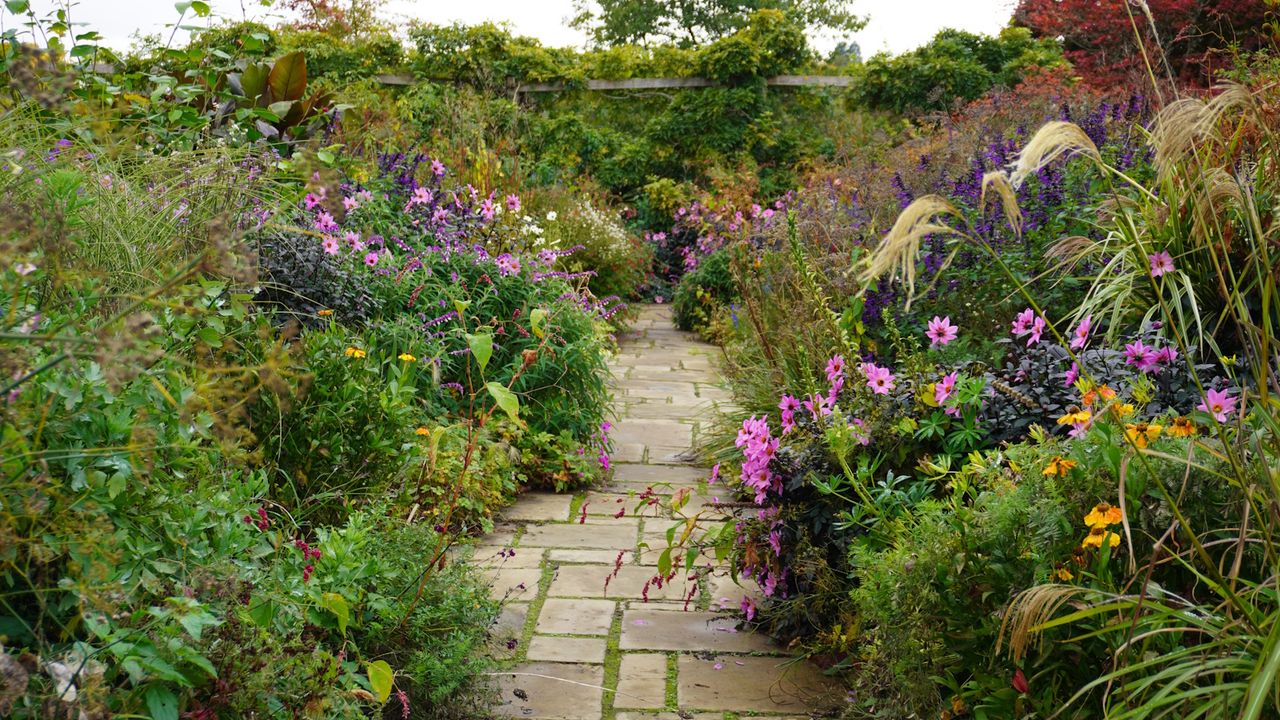Nestled in the picturesque Sussex countryside, Gravetye Manor has transformed into a luxury hotel while preserving its rich horticultural heritage. Originally an Elizabethan property, it became the creative playground of renowned horticulturist and garden writer William Robinson when he acquired it in 1884. Robinson dedicated nearly five decades to cultivating the garden, pioneering principles of wild gardening and establishing one of England’s most remarkable Victorian walled kitchen gardens.
Today, Gravetye Manor boasts a stunning 35-acre garden that has undergone significant restoration in recent years. The meticulous work has revived many of its original features, including the impressive 1.5-acre walled kitchen garden. This garden not only serves as a visual delight but also supplies the hotel’s Michelin Star restaurant with an array of fresh ingredients, from root vegetables to fall flowers, showcasing the garden’s bounty.
Harvesting the Season: A Culinary Journey
In mid-October, Gravetye Manor’s garden is in full swing, and the Head Gardener, Tom Coward, shares his enthusiasm during a tour. “William moved the kitchen garden three times before he decided this is the perfect spot,” he explains. Upon entering through the garden gate, visitors are greeted by towering elliptical walls and lush vegetable beds filled with vibrant cabbage, lettuce, and beetroot, all emblematic of the fall harvest.
As Coward guides me through the garden, he highlights the careful engineering of the space, particularly a small hole in the lowest wall known as a frost gate. “This fascinating piece of engineering creates a microclimate ideal for growing crops,” he notes. This innovation was a result of Robinson’s extensive study of the land, culminating in the garden’s completion around 1900.
Despite its historic significance, the kitchen garden fell into disrepair after Robinson’s death in 1935. It wasn’t until 2010 that restoration efforts began, led by Coward. “We looked at its heritage, how to make it productive, and its aesthetic value,” he says, emphasizing the freedom they had due to limited historical documentation.
Coward reveals that pears, Robinson’s favorite fruit, can still be found in the garden, many espaliered in classic patterns. “This design is a nod to Great Dixter, another Sussex garden where I worked,” he adds, showcasing the blend of history and personal touch that defines Gravetye Manor.
The Legacy of Wild Gardening
Gravetye Manor is not just a kitchen garden; it represents the birthplace of wild gardening. Coward explains that the first mention of this term appeared in Robinson’s book, The Wild Garden. “With wild gardening, you must have contrast. It’s a fine line between beautiful naturalistic planting and chaos,” he says, as we stroll through the wildflower meadow.
Robinson’s philosophy of embracing the landscape over formal gardening styles paved the way for the Arts and Crafts Gardens movement. This movement emphasized gardens as relaxed spaces that harmonized with their surroundings, an idea championed by influential figures like Gertrude Jekyll.
As we admire the stunning flower garden, Coward points out the seasonal brilliance of the dahlias and other blooms. “This wildflower meadow is probably the most enduring part of his work,” he states, showcasing how the garden’s design integrates natural beauty with productive cultivation.
The relationship between the garden and the hotel’s culinary offerings is paramount, with Executive Chef Martin Carabott utilizing the garden’s organic crops to create unique dishes. “We’re trying to grow flavors that you simply can’t buy,” Coward explains. The adaptability of the garden allows it to cater to the evolving tastes of each chef, further enhancing the dining experience.
As visitors explore Gravetye Manor, they not only witness a horticultural revival but also a commitment to preserving a legacy that has shaped English gardening. Coward’s enthusiasm embodies the spirit of innovation and tradition, ensuring that Robinson’s principles continue to thrive.
Gravetye Manor stands as a testament to the enduring power of nature and the artistry of gardening. Its transformation from a neglected space into a thriving kitchen garden reflects a deep respect for history and a dedication to sustainable practices. As Coward aptly puts it, “This garden is special. Sometimes the world is a difficult and frightening place. But, every time I come in here and shut the gate, it’s almost like it goes away.”








































































